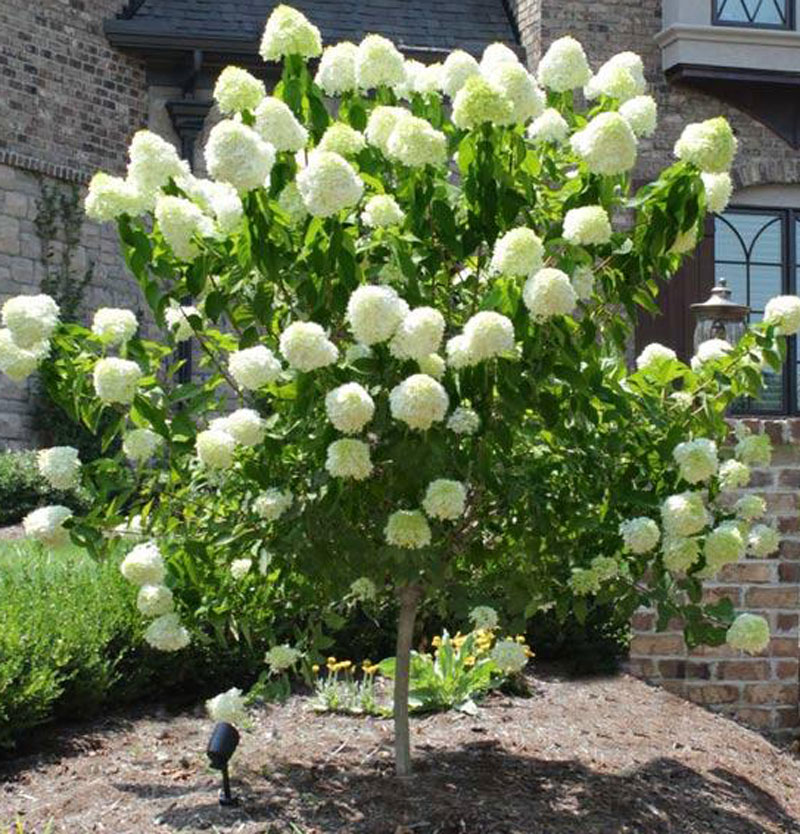AboutDid you know what a hydrangea tree is? This is a type of flowering plant that has small and shrub shaped, in Latin called Hydrangea paniculata.
Hydrangeas generally grow low with branches that are close to the ground like the Split-Leaf Philodendron. If you are interested in this bush and want to grow it, follow this article to get more information.
What is Hydrangea Tree?
Hydrangea is a very popular shrub plant with beautiful flowers of various variants. One of the most famous is Hydrangea microphylla, this plant raises snowflakes that change color according to the condition of the land where it grows. This plant can grow to reach a height of 25 feet.
Hydrangea Tree Information
If you want to grow hydrangeas, the first thing you should watch for is the condition of the soil. Spices hydrangeas at U.S.
Department of Agriculture plant hardiness zones 5 through 8a. It grows an average of 25 feet and has a width of up to 20 feet.
The hydrangea tree has dark green leaves and it will fall in the summer. The length of the leaves can reach 6 inches and the width is 3 inches. When the leaves will fall, the leaves only experience a slight change in color from green to slightly yellowish green.
The flowers appear in the branches which can reach 8 inches long with a cream color. When cooked, the color changes to purple and pink on the inside.
The Hydrangeas tree produces a lot of interest even because of the large amount of interest, often the branches dangle the ground because of holding this interest burden.
Caring for Hydrangea
Hydrangea plants need water in the summer to survive and grow well. What’s more if you plant hydrangeas in a place that is fully exposed to the sun.
If there is a place, you should plant it in a place that has shade in the afternoon so the plants do not feel hot all day.
The Hydrangeas plant is a tree that can tolerate almost all types of soil, so-called Pee Gee hydrangeas, even it can grow on acidic or alkaline soils.
You might also like:
- How to Grow Broccoli In Garden
- About How to Grow Kale – Tips for Growing Kale
- How to Grow Peas – Let See 11 Steps in Growing Peas
Tip to Keep Hydrangeas in Winter
Winter can be a problem with hydrangeas. For that, you must be careful in choosing seeds, because these plants have several variants.
Some are resistant to winter, some are not resistant. Winter can be a threat to hydrangea trees. You must know how to protect this plant in winter.
Hydrangea Cold Tolerance
Hydrangeas include beautiful plants with large flowers on the yard of your home. But there are types of plants that are not resistant to winter.
If you want to get hydrangeas that are resistant, you can plant variants such as smooth hydrangea (“Annabelle”) and panicle, or PG hydrangea, they are included in the winter.
If you plant this type, you don’t need to worry about winter. This type does not need protection from winter unless the temperature is lower than -30 degrees.
But if you plant large leafy plants, they have formed flower since the previous season, to be able to bloom in the summer you have to guard it against winter attacks. So, of course you have to know how to protect this plant from winter.
The Winter is Bad for Hydrangeas
During the arrival of winter, perhaps a large type of leaf hydrangea can experience extinction if you do not get the proper care. His death could be due to cold or the result of an accident caused by the wind.
During winter, you may not see any growing buds that indicate this plant is not active this season.
One way to protect hydrangeas from winter is to provide protection mulch on the ground or on the edge of the roots. This aims to prevent root broken. The best mulch for this is straw, you can put straw on the roots.
